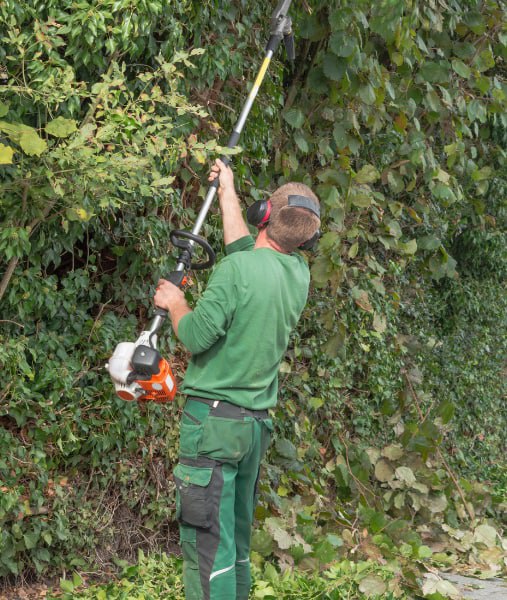Introduction: Tree crown reduction is an essential tree care practice that involves selectively pruning specific branches to maintain a balanced and healthy canopy. While it is a job that requires expertise and experience, some homeowners may consider attempting it themselves. In this blog post, we’ll explore the pros and cons of DIY tree crown reduction and highlight when hiring a professional arborist from Rochester Tree Surgeons is best.

- Pros of DIY Tree Crown Reduction:
a) Cost Savings: DIY projects can save money on labour costs, especially for smaller trees or minor pruning needs.
b) Hands-On Experience: DIY pruning can be a valuable learning experience for enthusiasts with some tree care knowledge. - Cons of DIY Tree Crown Reduction:
a) Safety Risks: Tree crown reduction often involves working at heights, which can be hazardous for untrained individuals.
b) Improper Pruning: Inexperienced pruning can lead to removing essential branches, harming the tree’s health and appearance.
c) Lack of Equipment: Professional arborists possess specialised tools that ensure precise and efficient pruning, which homeowners might not have.
d) Incomplete Results: DIY attempts may not achieve the desired results without proper knowledge or lead to over-pruning. - When to Hire a Professional:
a) Large Trees: For tall trees or those with complex branch structures, hiring a professional is essential for safety and optimal results.
b) Hazardous Conditions: If pruning requires working near power lines, unstable terrain, or near structures, professionals are better equipped to handle such situations.
c) Tree Health Concerns: Professionals can assess the tree’s health and recommend appropriate pruning techniques to promote growth and vitality.
d) Preservation of Aesthetics: Arborists have an eye for preserving the tree’s natural shape and structure during crown reduction. - Benefits of Professional Arborists:
a) Safety: Trained arborists have the expertise and safety equipment to perform tree crown reduction without endangering themselves or others.
b) Tree Health: Professionals ensure that the tree is pruned to encourage healthy regrowth and minimise the risk of disease.
c) Precision: Arborists possess the knowledge to make precise cuts, reducing the chances of causing damage to the tree.
d) Proper Timing: Professionals understand the best time to prune specific tree species for optimal results.
Conclusion: While DIY projects can be rewarding, tree crown reduction is a specialised task that is best left to trained professionals. Hiring an experienced arborist from Rochester Tree Surgeons ensures safety, tree health, and a beautifully pruned canopy. If you have trees needing crown reduction, consulting a professional arborist will provide the best results, preserving the beauty and vitality of your trees for years to come.